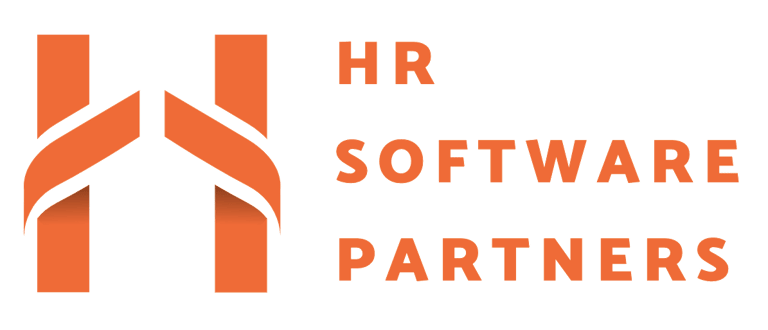Subscription vs. One-Time Purchase HR Software: Pros and Cons


Introduction to HR Software Models
As businesses continue to evolve and adapt to changing workplace dynamics, the need for effective human resources (HR) management solutions has become increasingly paramount. Two predominant models of HR software are subscription-based and one-time purchase options. Understanding these models is essential for organizations seeking to optimize their HR practices, as the choice can significantly influence both operational efficiency and overall costs.
Subscription-based HR software operates on a recurring payment system, where businesses pay a regular fee—monthly, quarterly, or annually—to utilize the software. This model affords companies flexibility, allowing them to scale their HR tools according to their current needs. Additionally, subscription software often includes updated features and support as part of the package, ensuring users have access to the latest functionalities without incurring extra costs. This ongoing financial commitment can also help streamline cash flow management for organizations, allowing better budgeting for HR-related expenses.
In contrast, one-time purchase HR software presents a different financial approach, involving a single, upfront payment for a perpetual software license. This model appeals to organizations that prefer to make a one-time investment rather than committing to ongoing costs. One-time purchase software often allows for more customized configurations, as the initial cost might be allocated into a tailored solution that fits specific organizational requirements. However, businesses must be aware of additional costs for updates, maintenance, and support, which can arise over time as the software ages and requires additional resources.
Choosing the appropriate HR software model is a critical decision for any organization. The selection can affect both the effectiveness of HR operations and the overall financial health of the business. As such, it is vital for organizations to assess their unique needs, budgetary constraints, and long-term goals before making this investment.
Pros of Subscription-Based HR Software
Utilizing subscription-based HR software offers numerous advantages, making it an appealing choice for businesses of varying sizes. One of the most significant benefits is the lower upfront costs associated with subscription models. Traditionally, purchasing HR software necessitates a considerable investment upfront, which can be a substantial barrier for many organizations. With a subscription model, businesses instead pay a regular fee, often on a monthly or annual basis, allowing for better budget management and reduced financial strain.
Another advantage of subscription-based HR software is the flexibility it provides in scaling the software according to evolving business needs. As organizations grow or experience fluctuations in their workforce, subscription models allow for easy adjustments to the plan. This scalability ensures that businesses can maintain efficiency in their HR processes without being tied down to a fixed, often obsolete, solution.
Additionally, subscription services typically include access to regular updates and new features without incurring extra costs. This ensures that businesses always have the latest tools and functionalities at their disposal, improving productivity and facilitating the exploration of innovative HR practices. Keeping software up-to-date can be a labor-intensive process when utilizing a one-time purchase model, making subscriptions a more practical choice for many businesses.
Furthermore, cash flow management is enhanced through subscription-based HR software, as it allows companies to forecast expenses with greater accuracy. Knowing the exact monthly or annual cost aids in financial planning and ensures that budgets remain aligned with operational needs.
Lastly, subscription models often come with robust support services included, enhancing the overall user experience. Access to dedicated customer service and technical support can be invaluable, especially for organizations with limited in-house IT resources.
Cons of Subscription-Based HR Software
While subscription-based HR software offers various advantages, it is essential to consider the potential drawbacks that could affect the decision-making process for an organization. One significant concern is the long-term cost. Over time, the cumulative expenses associated with monthly or annual payments can surpass the one-time purchase cost of traditional software solutions. This ongoing financial commitment may strain budgets, particularly for small to medium-sized enterprises that might be more vulnerable to fluctuating cash flows.
Another downside is that organizations must consistently manage periodic payments to maintain access to the software. If a company encounters financial difficulties or fails to monitor its budget effectively, the risk of missed payments looms large. Such lapses can lead to immediate service interruptions, disrupting HR functions that depend on the software. This situation may create additional difficulties in workforce management and documentation retrieval if access is suddenly revoked.
Furthermore, with subscription-based models, organizations usually do not own the software outright. This lack of ownership creates a dependency on the vendor for access, updates, and continued usage rights. Upon termination of the subscription, companies might find themselves without the software or its data, complicating transitions to alternative solutions. This can be particularly problematic if organizations have invested significant resources into customizing the software according to their specific HR needs.
Lastly, the features included in subscription plans can vary widely. Organizations often find themselves at a disadvantage if they choose lower-tier subscriptions that lack essential capabilities needed for their HR activities. This variability may lead to functionality gaps and force companies to upgrade plans, increasing costs further. Hence, careful consideration is necessary when selecting between different subscription tiers to ensure that the chosen plan aligns with the organization's requirements.
Pros and Cons of One-Time Purchase HR Software
One-time purchase HR software offers various advantages that can appeal to businesses of different sizes. A primary benefit of this model is the ownership that comes with purchasing the software outright. Once the payment is made, companies are free to utilize the software without worrying about recurring fees. This can result in lower costs over time, especially for organizations that have a fixed need for the software features without the requirement for ongoing updates. Furthermore, one-time purchase models enable companies to customize their software to meet specific business requirements without the constraints imposed by vendors in subscription-based models.
On the other hand, one-time purchase HR software is not without its drawbacks. The most significant disadvantage is the higher initial cost. Unlike subscription services, where payment is spread over time, businesses may face a substantial financial burden in front-end expenses. Additionally, the challenge of updating the software can pose issues for many organizations. With technology evolving rapidly, businesses may find it challenging to keep their systems updated and secure, leading to potential vulnerabilities. There is also a risk of compatibility issues arising when new hardware or software systems are implemented. These compatibility issues can create disruptions in operational efficiency and may involve additional costs to remedy.
Moreover, limited support options are often cited as a drawback of one-time purchase models compared to subscription services. Software updates and technical assistance may not be as readily available, potentially leaving organizations without the necessary help when issues arise. Evaluating these pros and cons is essential for businesses considering HR software solutions, as it helps determine whether a one-time purchase model aligns with their strategic goals and operational needs.
